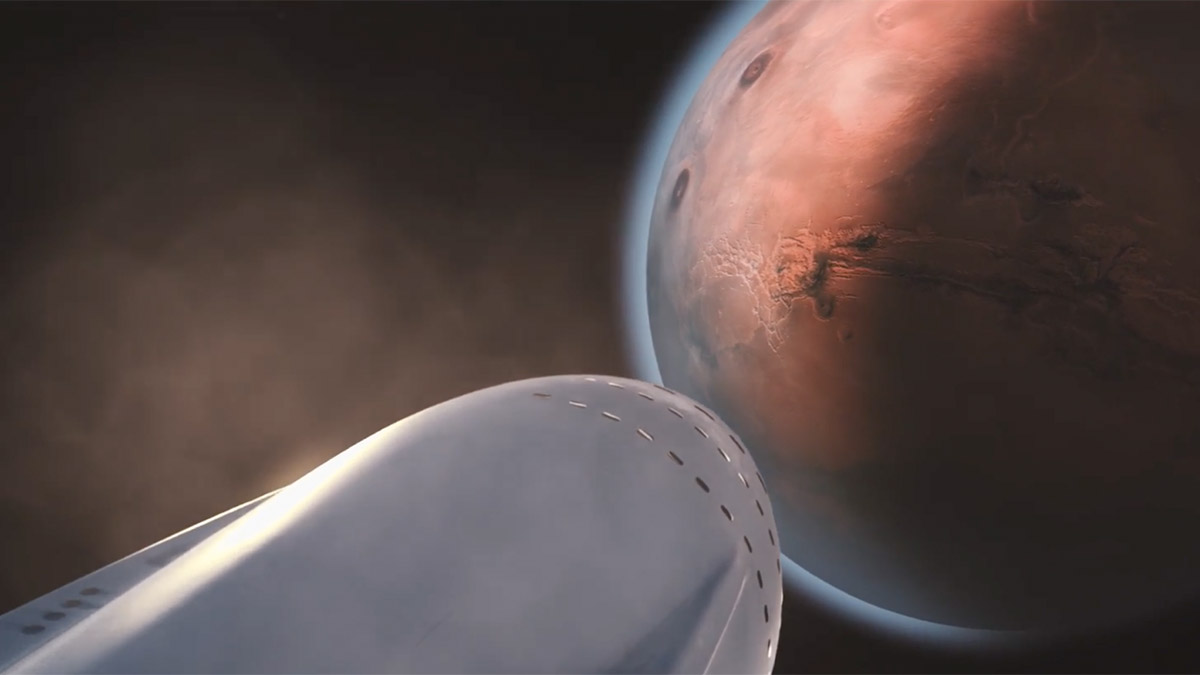can we really colonize space a hundred people at a time?

It’s been a month since Elon Musk unveiled his architecture for landing up to a hundred people on Mars in the next few decades, and a number of pundits had their chance to weigh in or take potshots. Overall, the consensus seems to be that while none of the technologies proposed are impossible or even in any way impractical, the timeline is overly aggressive and the details are not exactly fleshed out enough for a full battle plan. Way too many things have been glossed over, and there’s definitely an argument for whether we really want to have full blown colonization right off the bat. We’ve yet to land one person on Mars. Starting with a hundred, some if not most of whom paid a notable sum to be there, is kind of like learning how to swim competitively at the Olympics. Not a whole lot of things have a chance to fail without dire consequences for the crew and some big issues seem unaddressed.
Even more interestingly, Musk isn’t just planning a mission architecture just for Mars, he’s basically aiming to make this Interplanetary Transport System to be the way humans explore the entire solar system, which makes sense. I would agree with him from an engineering standpoint. You really shouldn’t want to make a purpose build system for every mission because it’s wasteful over the long term and makes space exploration far more expensive. It’s way more prudent to create a generalist system ready to go anywhere and reuse as much of itself as possible to expedite missions, crewed and robotic. In the interest of refreshing everyone’s memory of how this is all supposed to work according to Musk and because I really wanted an excuse to post this video, here’s the concept he unveiled for his simulated trip to Mars…
Again, a lot of things to like about this. One reusable, rocket, a turnaround that’s long enough to do basic safety checks in orbit while the mission can be safely and easily aborted, but short enough to get fuel up to the waiting transport vehicle quickly and efficiently, a large vehicle that gives astronauts some space to spread out during the trip, and, not stated in video by said by the company, plasma engines for 90 day transit. But to me, the ship does not look nearly big enough for its stated crew of 100 and plenty of fun amenities promised by Musk , probably closer to 35 or 40 people just judging by the rough dimensions. I’m also concerned about radiation shielding and at least some semblance of artificial gravity for those on board to prevent the effects of cosmic rays on brain cells and bone and muscle loss over three months.
Now, you may say that 90 days is not that big of a deal. We’ve sent people into space for a year a few times and they were fine. With some innovative radiation shielding and daily training in an on board centrifuge, they could make out fine, right? Probably yes. But what about missions to Jupiter? And Saturn? Or Neptune? This is supposed to be a platform for exploring space, not a ferry to and from Mars, so it needs to work for an effectively indefinite range. (Yes, it’s a controversial statement, but I’ll stand by it.) Likewise, if we send people into space, do we not owe it to them to make sure their health and safety are our top priorities, not take risks just to make sure we can hit a mission timeline. Besides, when we do have basically paying customers who plopped down $500,000 for a trip, we have to start lowering our tolerance for health risks quite significantly to keep the cash flowing.
Obviously most of these concerns won’t apply for robotic missions designed to ferry supplies and set up the necessary infrastructure for long term crews on Mars, Europa, Titan, or Pluto. The only possible issue I see there would be funding. But one thing that does bother me is that it seems like SpaceX won’t return to the Moon, something that I would posit is a huge mistake since our natural satellite would be a perfect place for a dress rehearsal, a great place to do astronomy, test updated technologies, and launch even bigger and more powerful rockets carrying larger payloads. It may be too early to treat what we saw as the final plan for the ITS, and knowing Musk, he is probably well aware of the problems we highlighted, but released the idea anyway to encourage people to find solutions in the long term.
Overall, it does seem like his grand vision doesn’t need all that much to get off the ground from a purely technical standpoint, just a little bit of political will and funding. Though considering how many politicians have turned the once unstoppable NASA into a pork factory for large defense contractors and jobs program without a real, long term mission for their districts, and really want to keep it that way, limiting real exploration to robotic missions at JPL, that’s probably going to be a much bigger challenge than anything else SpaceX will have to face when trying to make humanity a space-faring species…





